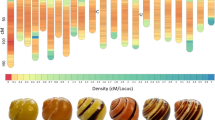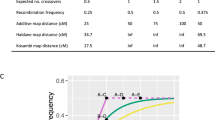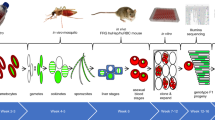Abstract
CHEN and Giblett1 have reported the occurrence of genetic polymorphism for human red cell glutamic pyruvic transaminase (GPT; EC 2.6.1.2). The usual phenotypes of red cell GPT (that is, GPT 1, 2-1 and 2) could be identified on cellogel by adapting the starch gel electrophoretic method of Chen and Giblett to cellogel (Fraser et al., unpublished). When a buffer system which separates the human and Chinese hamster forms is used, however, the isozyme patterns formed by fibroblasts were found to be distinctly different from those by red cells. We have employed the fibroblast isozymes as markers in human gene linkage studies using man–Chinese hamster somatic cell hybrids and have reported that the enzyme with GPT activity is probably a tetramer determined by two genes named GPT B and GPT C located on different chromosomes and linked to LDH B and LDH A respectively2.
This is a preview of subscription content, access via your institution
Access options
Similar content being viewed by others
References
Chen, S. H., and Giblett, E. R., Science, 173, 148 (1971).
Someren, H. van., Meera Khan, P., Westerveld, A., and Bootsma, D., Nature. new. Biol., 240, 221 (1972).
Author information
Authors and Affiliations
Rights and permissions
About this article
Cite this article
VAN SOMEREN, H., KHAN, P., WESTERVELD, A. et al. Claim that two human linkage groups carry different loci for GPT and LDH withdrawn. Nature 249, 279–280 (1974). https://doi.org/10.1038/249279a0
Received:
Issue Date:
DOI: https://doi.org/10.1038/249279a0
Comments
By submitting a comment you agree to abide by our Terms and Community Guidelines. If you find something abusive or that does not comply with our terms or guidelines please flag it as inappropriate.



